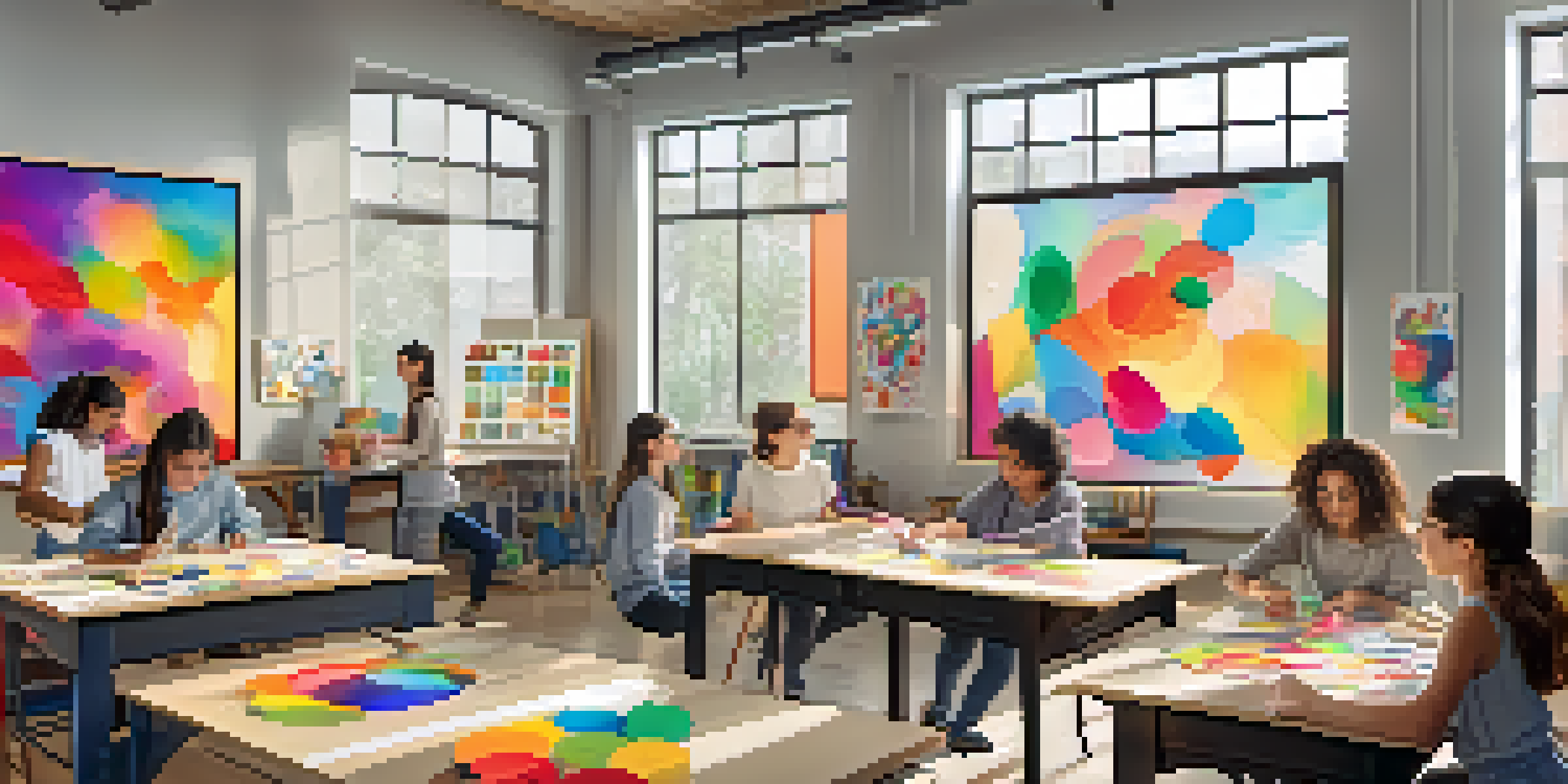AR in Art Education: A New Canvas for Creative Expression

Understanding Augmented Reality in Art Education
Augmented reality (AR) is a technology that overlays digital content onto the real world, enhancing our perception of reality. In art education, AR creates immersive experiences that can redefine how students engage with artistic concepts. By integrating this technology, educators can present complex ideas in a more tangible and relatable way.
Benefits of AR for Creative Expression
One of the most significant benefits of AR in art education is its ability to foster creativity. With AR, students can experiment with colors, shapes, and textures without the limitations of traditional mediums. This freedom encourages them to think outside the box and express their ideas more boldly.
AR Enhances Creative Expression
Augmented reality allows students to experiment freely with their artistic ideas, fostering creativity beyond traditional methods.
Enhancing Artistic Skills Through AR Tools
AR tools provide students with interactive platforms to hone their artistic skills. For instance, they can use AR apps to visualize their artwork in different environments or manipulate it in real-time. This hands-on approach not only builds technical skills but also boosts confidence in their artistic abilities.
Creating Collaborative Learning Experiences
AR technology facilitates collaboration among students, fostering a sense of community. By working together on AR projects, students can share ideas and techniques, enhancing their learning experience. This collaborative spirit often leads to innovative outcomes that reflect diverse perspectives.
AR Bridges Theory and Practice
By visualizing artistic concepts in real contexts, AR helps students connect theoretical knowledge to practical application.
Bridging the Gap Between Theory and Practice
In art education, theory can sometimes feel detached from practice. AR bridges this gap by allowing students to visualize artistic concepts in a practical context. For example, they can study famous artworks and see how AR can transform these pieces into interactive experiences.
Overcoming Challenges in Implementing AR
Despite its benefits, integrating AR into art education comes with challenges. Access to technology and resources can be a barrier for some schools. However, with thoughtful planning and support, these obstacles can be overcome, allowing for a richer educational experience.
Collaboration Through AR Projects
AR technology promotes teamwork among students, leading to innovative projects that incorporate diverse perspectives.
The Future of Art Education with AR
As technology continues to evolve, the role of AR in art education will likely expand. Educators are beginning to explore new ways to incorporate AR into curricula, making art more accessible and engaging. This evolution promises to cultivate a new generation of artists who are adept at using technology creatively.
Conclusion: Embracing AR as a New Canvas
In conclusion, augmented reality is not just a trend; it's a transformative tool in art education. By embracing AR, educators can provide students with unique opportunities for creative expression and collaboration. As we look to the future, it's clear that AR will play a vital role in shaping the next wave of artistic innovation.